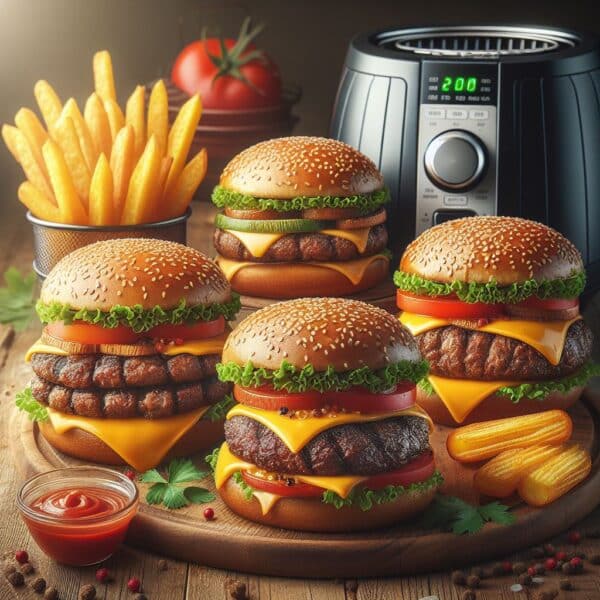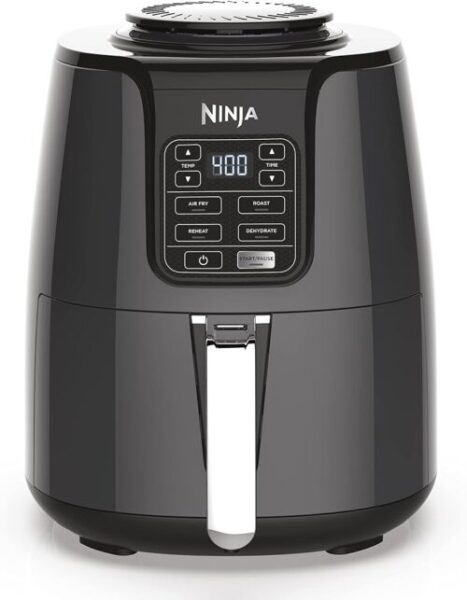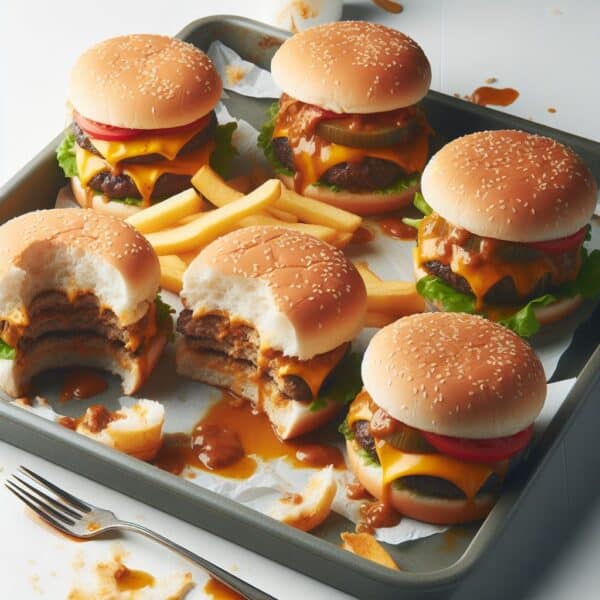Adding oil to an air fryer is optional. It can enhance flavor and crispiness, but many dishes can be cooked without it for a healthier option.
In the world of modern cooking appliances, air fryers have emerged as a game-changer, promising crispy delights with minimal oil. But do you truly need oil to make the most of your air fryer? Let’s unravel this culinary conundrum.
Table of Contents

Oil vs. No Oil
Understanding the Basics
Air fryers have revolutionized the way we cook by utilizing hot air circulation to achieve crispy, golden-brown results without the need for excessive oil. Unlike traditional deep frying, where food is submerged in oil, air fryers mimic the frying process by evenly circulating hot air around the food. This innovative cooking method significantly reduces the amount of oil required, resulting in healthier dishes with less fat and fewer calories.
Benefits of Minimal Oil
Healthier Cooking
One of the primary benefits of using minimal or no oil in an air fryer is the promotion of healthier cooking. By eliminating or reducing the amount of oil used in cooking, you can significantly decrease the intake of unhealthy fats and calories. This makes air frying an attractive option for individuals looking to improve their diet and make healthier lifestyle choices.
Reduced Greasiness
Another advantage of using minimal oil in an air fryer is the reduction of greasiness in the cooked food. Traditional deep frying often results in greasy, oily textures, which can be off-putting to some individuals. Air frying allows you to achieve crispy, crunchy textures without the excessive greasiness, resulting in lighter and more enjoyable dishes.
Potential Calorie Reduction
Using minimal or no oil in your air fryer can also potentially lead to a reduction in overall calorie intake. Since oil is a concentrated source of calories, cutting back on oil usage can help lower the calorie content of your meals. This is particularly beneficial for individuals who are watching their calorie intake or trying to manage their weight.
In summary, air frying offers a healthier alternative to traditional deep frying by utilizing hot air circulation to cook food with minimal oil. By embracing the benefits of minimal oil usage, such as healthier cooking, reduced greasiness, and potential calorie reduction, individuals can enjoy delicious and satisfying meals without compromising on taste or texture.
When Oil Can Be Helpful
Enhancing Texture and Flavor
While air fryers are celebrated for their ability to produce crispy results with minimal oil, there are instances where adding a small amount of oil can significantly enhance the texture and flavor of certain dishes. Let’s explore how oil can elevate your air-fried creations:
Crispy Texture
Achieving the perfect golden-brown exterior on homemade fries, vegetables, or chicken wings often requires more than just hot air. While air fryers do a commendable job of crisping food without oil, a light coating of oil can take it to the next level. The oil acts as a conductor of heat, ensuring even browning and creating that irresistible crunch that’s synonymous with deep-fried delights. Without this thin layer of oil, foods may lack the crispy texture that makes them so satisfying to bite into.
Moisture and Flavor
Lean proteins like fish or chicken breasts are prone to drying out when cooked at high temperatures. However, a gentle brush or toss with oil before air frying can help seal in moisture and prevent the meat from becoming dry and tough. Additionally, oil serves as a carrier for flavor, allowing herbs, spices, and marinades to adhere to the surface of the protein more effectively. This results in a juicier, more flavorful end product that’s sure to tantalize your taste buds.
By judiciously incorporating oil into select dishes prepared in an air fryer, you can achieve a perfect balance of texture and flavor. Whether you’re aiming for crispy perfection or seeking to infuse lean proteins with moisture and taste, a light touch of oil can make all the difference in transforming your air-fried meals into culinary masterpieces.
Oil Selection and Usage
Choosing Wisely
Selecting the right type of oil for your air fryer is crucial to achieving optimal cooking results. Here’s why choosing oils with high smoke points like avocado, canola, or peanut oil is essential:
High Smoke Points
Oils with high smoke points are able to withstand the high temperatures typically used in air fryers without burning or producing unpleasant flavors. Avocado, canola, and peanut oil are excellent choices due to their ability to maintain stability at high heat, ensuring that your food cooks evenly and retains its natural flavors.
Preventing Burning
Using oils with low smoke points, such as olive oil, may result in the oil burning and imparting a bitter taste to your food. By opting for oils with higher smoke points, you can avoid this issue and enjoy perfectly cooked dishes without any undesirable flavors.
Application Tips
Apply Sparingly
While oil can enhance the texture and flavor of your air-fried foods, it’s important to use it sparingly to avoid excess greasiness. Using a mister or brush to apply a light coating of oil ensures that you achieve an even distribution without overdoing it. This allows you to enjoy the benefits of oil without adding unnecessary calories or fat to your meals.
Ensure Even Coating
To ensure that your food cooks evenly and achieves the desired crispiness, it’s essential to apply oil evenly across its surface. Whether you’re coating vegetables, proteins, or breaded items, taking the time to distribute the oil evenly ensures that each bite is perfectly crispy and flavorful.
By carefully selecting oils with high smoke points and applying them sparingly and evenly, you can maximize the benefits of oil in your air fryer cooking while achieving delicious results every time.
Ensuring a Secure Cooking Environment
While the allure of air frying lies in its ability to create crispy delights with minimal oil, it’s crucial to prioritize safety to prevent any potential hazards. Here’s why:
Using Oil Sparingly
Excessive oil in the air fryer can lead to splattering and potentially cause flare-ups, posing a fire hazard. Therefore, it’s essential to use oil sparingly, applying just enough to achieve the desired texture without overdoing it.
Avoiding Overcrowding the Basket
Overcrowding the air fryer basket can obstruct airflow, leading to uneven cooking and potentially causing the appliance to overheat. This can increase the risk of fire hazards. To ensure safe cooking, it’s advisable to arrange food in a single layer, allowing adequate space for air circulation.
By following these safety guidelines and using your air fryer responsibly, you can enjoy delicious meals with peace of mind, knowing that you’ve taken the necessary precautions to prevent any potential accidents.
Preserving Oil Quality
Properly storing leftover oil used in the air fryer is essential to maintain its quality and prevent oxidation and rancidity. Here’s how to do it:
Allowing Oil to Cool
After each use, allow the oil to cool completely before handling it. Hot oil can be dangerous and cause burns if mishandled.
Straining and Filtering
Before storing, strain the oil to remove any food particles or debris that may have accumulated during cooking. Filtering the oil through a fine-mesh sieve or cheesecloth can help ensure its purity.
Using Airtight Containers
Transfer the strained oil to a clean, airtight container to prevent exposure to air, moisture, and light, which can accelerate oxidation. Choose a container made of glass or dark-colored plastic to further protect the oil from light.
Storing in a Cool, Dark Place
Store the sealed container of oil in a cool, dark place, such as a pantry or cupboard, away from direct sunlight and heat sources. Avoid storing oil near the stove or oven, as exposure to heat can hasten rancidity.
Monitoring and Discarding
Regularly check the stored oil for any signs of spoilage, such as off-odors, discoloration, or a cloudy appearance. If the oil appears rancid or has an unpleasant odor, it’s best to discard it rather than risking the quality of your dishes.
By following these storage practices, you can prolong the shelf life of leftover oil used in your air fryer and ensure that it remains fresh and suitable for future use.
Oil-Free Alternatives
Exploring Options For those seeking oil-free cooking alternatives, there are several techniques to achieve crispy goodness:
- Pre-heating the air fryer: Kickstart the crisping process by pre-heating the basket before adding food.
- Utilizing cooking sprays: Opt for oil-based sprays specially formulated for air fryers to prevent sticking without adding unnecessary oil.
- Coating with marinades or sauces: Flavorful marinades and sauces can add moisture and promote browning without the need for oil.

Examples and Recipes
Finding Inspiration
Exploring the versatility of air fryer cooking opens up a world of culinary possibilities. Here are some examples of dishes that showcase the flexibility of this innovative cooking method:
Oil-Enhanced Recipes:
Crispy Sweet Potato Fries: Slice sweet potatoes into thin strips, toss them lightly in avocado or olive oil, season with salt, pepper, and your favorite spices, then air fry until golden and crispy. The result is a healthier alternative to traditional fries, with a delightful crunch and sweet flavor.
Buffalo Cauliflower Wings: Coat cauliflower florets in a mixture of hot sauce and melted butter or oil, then air fry until crispy and golden. These spicy and tangy bites are perfect for game day snacks or as a tasty appetizer.
Breaded Fish Fillets: Dip fish fillets in beaten egg, coat them in seasoned breadcrumbs or panko, then air fry until the coating is crispy and the fish is cooked through. Serve with tartar sauce or lemon wedges for a delicious seafood dinner.
Oil-Free Creations:
Herb-Roasted Vegetables: Toss a variety of vegetables such as carrots, broccoli, and bell peppers with olive oil, garlic, and your favorite herbs, then air fry until tender and caramelized. These flavorful roasted vegetables make a colorful and nutritious side dish.
Tofu Bites with Tangy Marinade: Marinate tofu cubes in a mixture of soy sauce, rice vinegar, sesame oil, and ginger, then air fry until crispy on the outside and tender on the inside. Serve with a dipping sauce made from tahini, lime juice, and chili flakes for a satisfying vegan snack or protein-packed meal.
Seasoned Popcorn: Toss plain popcorn kernels with a drizzle of melted coconut oil and your favorite seasonings, such as nutritional yeast, smoked paprika, or garlic powder. Air fry until the popcorn is popped and golden brown, then enjoy a flavorful and crunchy snack without the need for added butter or oil.
These examples highlight the endless possibilities of air fryer cooking, whether you prefer oil-enhanced recipes for crispy indulgence or oil-free creations for a lighter option. With a little creativity and experimentation, you can create delicious and nutritious meals using your air fryer.
Conclusion
In conclusion, while oil can enhance certain dishes cooked in an air fryer, it’s not always a necessity. Air fryers offer the flexibility to cook with minimal oil or even without it, empowering you to enjoy guilt-free indulgence. Experiment with different techniques to find your preferred cooking style, and savor the crispy goodness of air-fried delights, whether oil-laden or oil-free. Happy cooking!
FAQs Frequently Asked Questions
What happens if you don’t use oil in an air fryer?
Using no oil in an air fryer is entirely possible! The hot air circulating within the fryer cooks the food, resulting in a crispy exterior and tender interior. You’ll still achieve delicious results, especially with foods that naturally contain oils or fats.
How much oil do you put in an air fryer?
The amount of oil needed varies depending on the recipe and personal preference. Typically, a light coating of oil applied with a sprayer or brush is sufficient. Aim for about 1-2 teaspoons for most recipes.
What kind of oil goes in an air fryer?
Oils with high smoke points, like avocado, canola, or peanut oil, are ideal for air frying. These oils can withstand the high temperatures used in the air fryer without burning.
Can I use Pam spray in my air fryer?
Yes, Pam spray or any oil-based cooking spray formulated for high heat can be used in an air fryer. However, ensure you’re using it sparingly to prevent buildup and maintain the fryer’s performance.
Is it OK to use olive oil in an air fryer?
While olive oil is delicious, it has a lower smoke point and may burn at the high temperatures used in air frying. It’s best to use oils with higher smoke points to avoid unpleasant flavors or smoke.
What can I use if I don’t have oil spray for my air fryer?
If you don’t have oil spray, you can lightly brush food with oil using a pastry brush or toss it with a small amount of oil in a bowl before placing it in the air fryer. Alternatively, consider pre-seasoning food with dry spices or using marinades to add flavor without oil.





